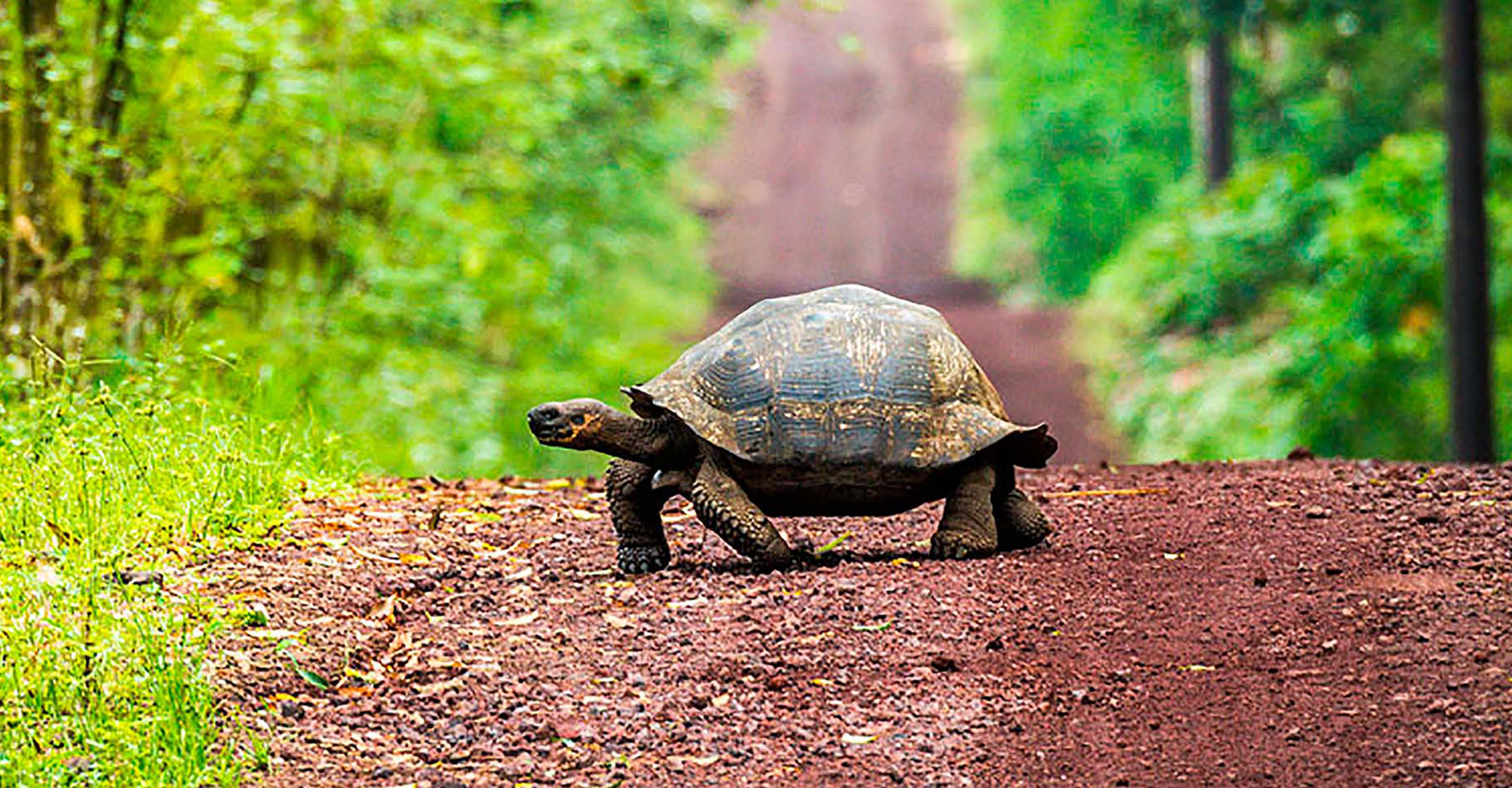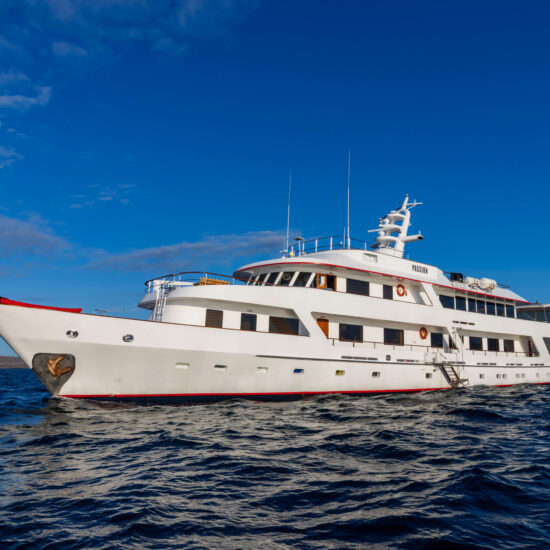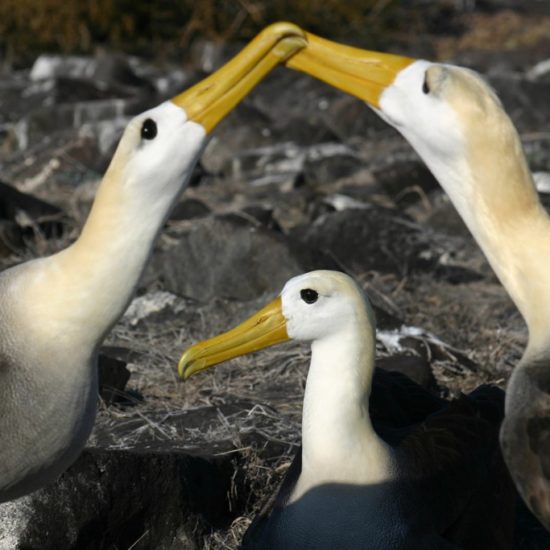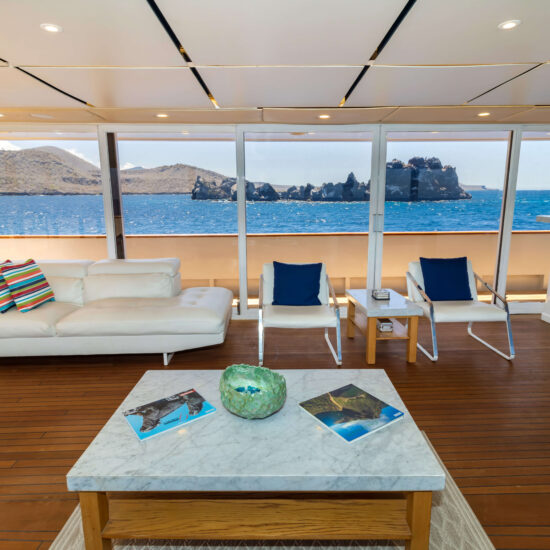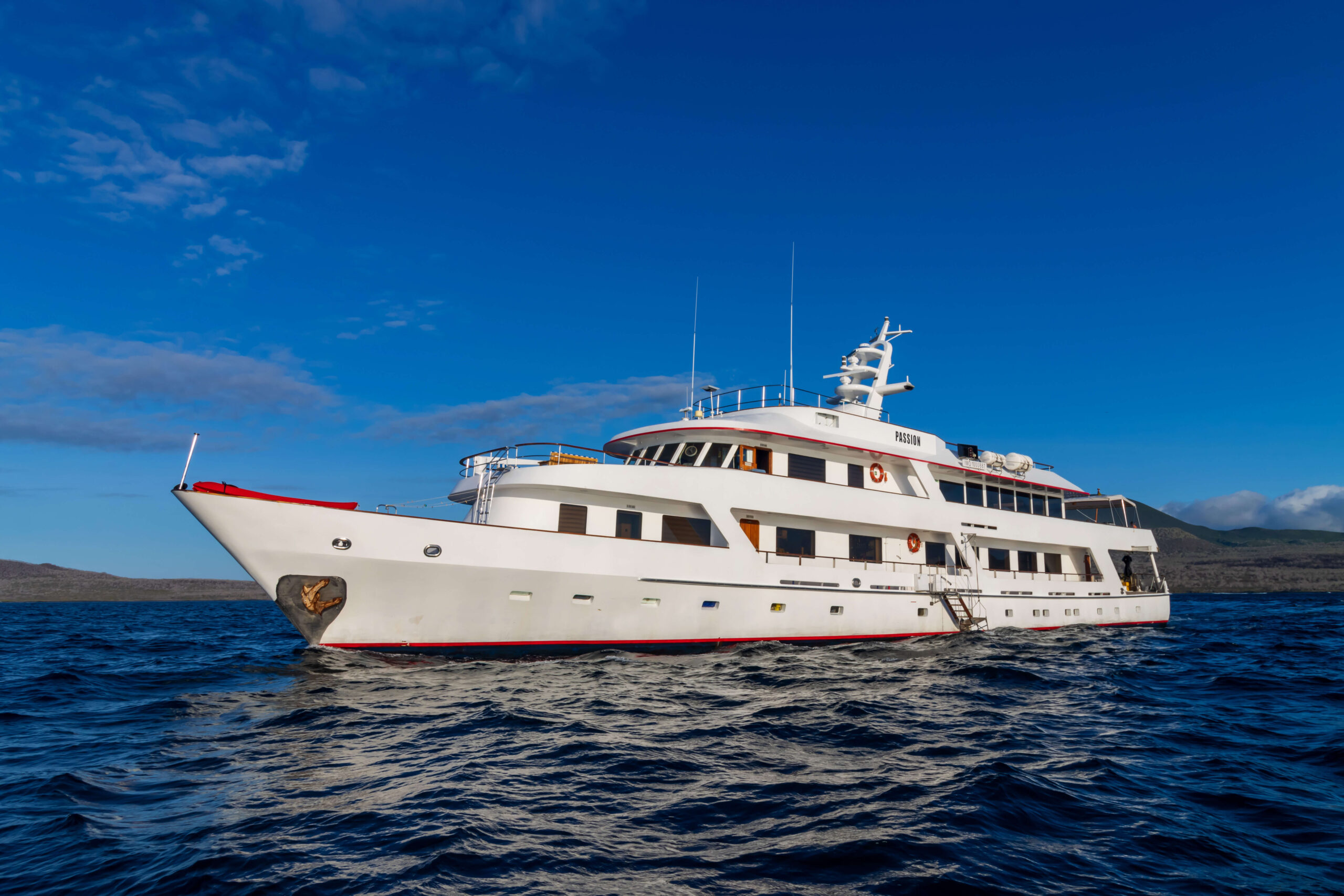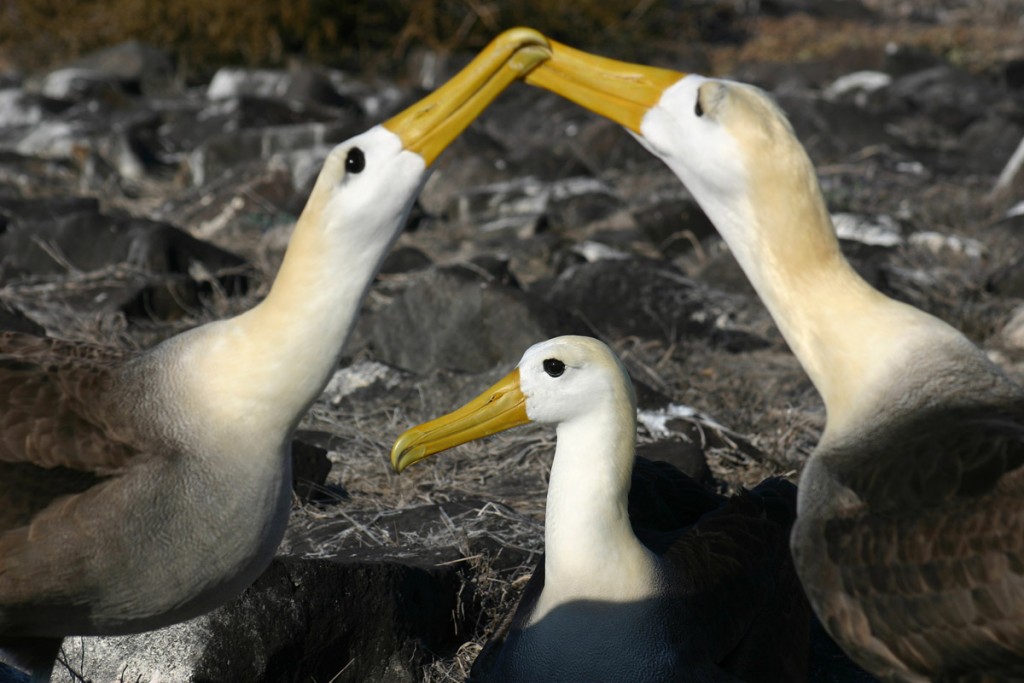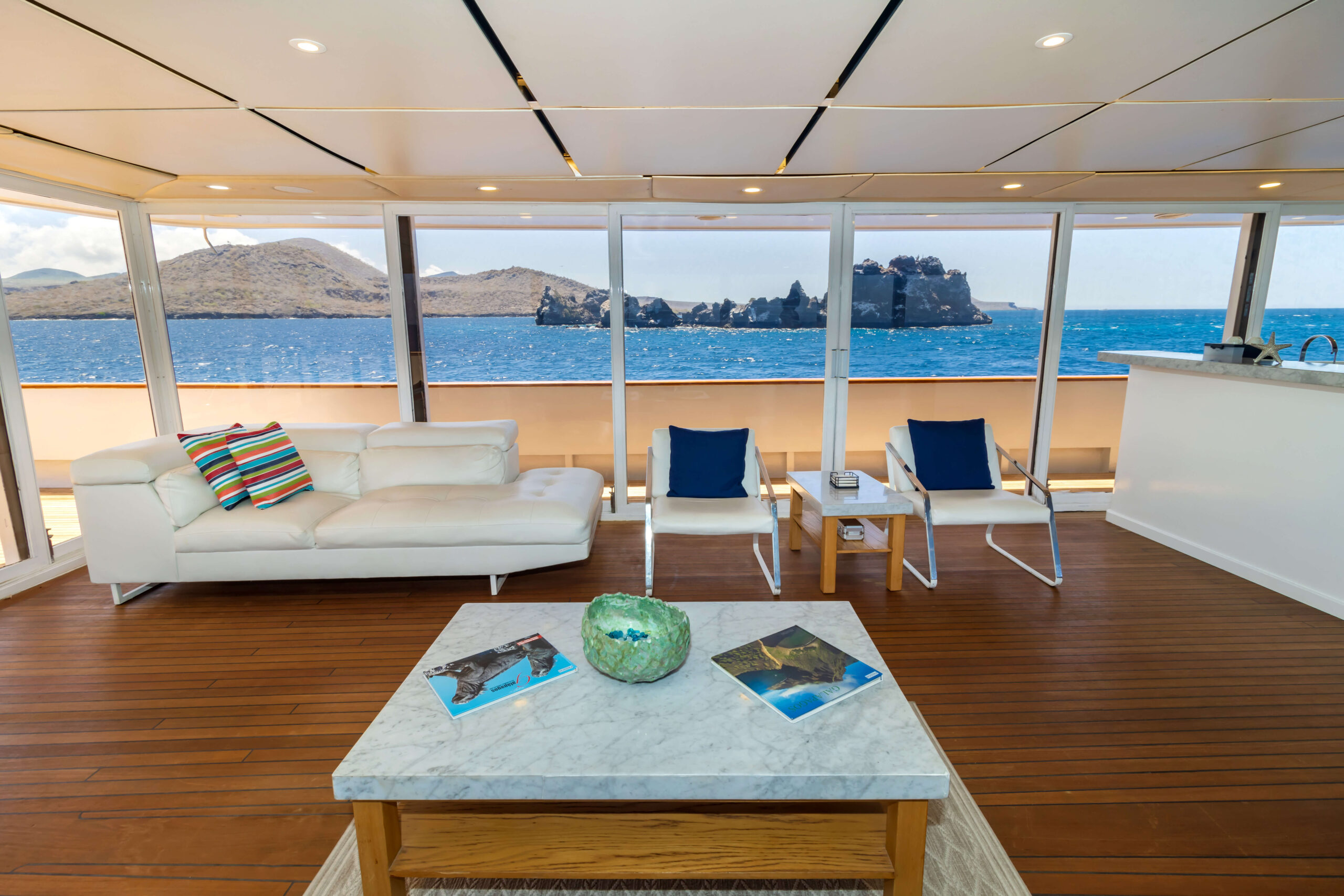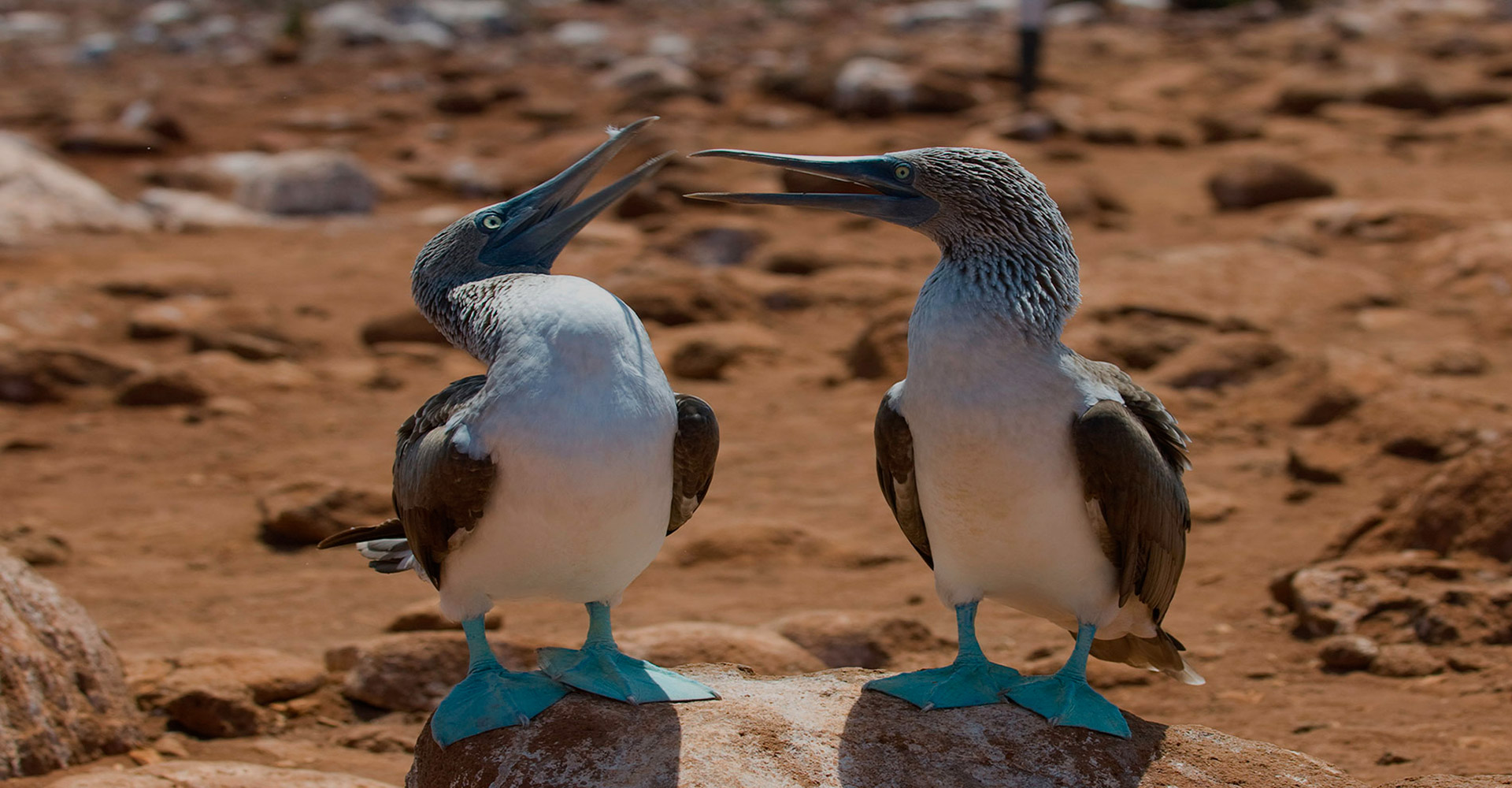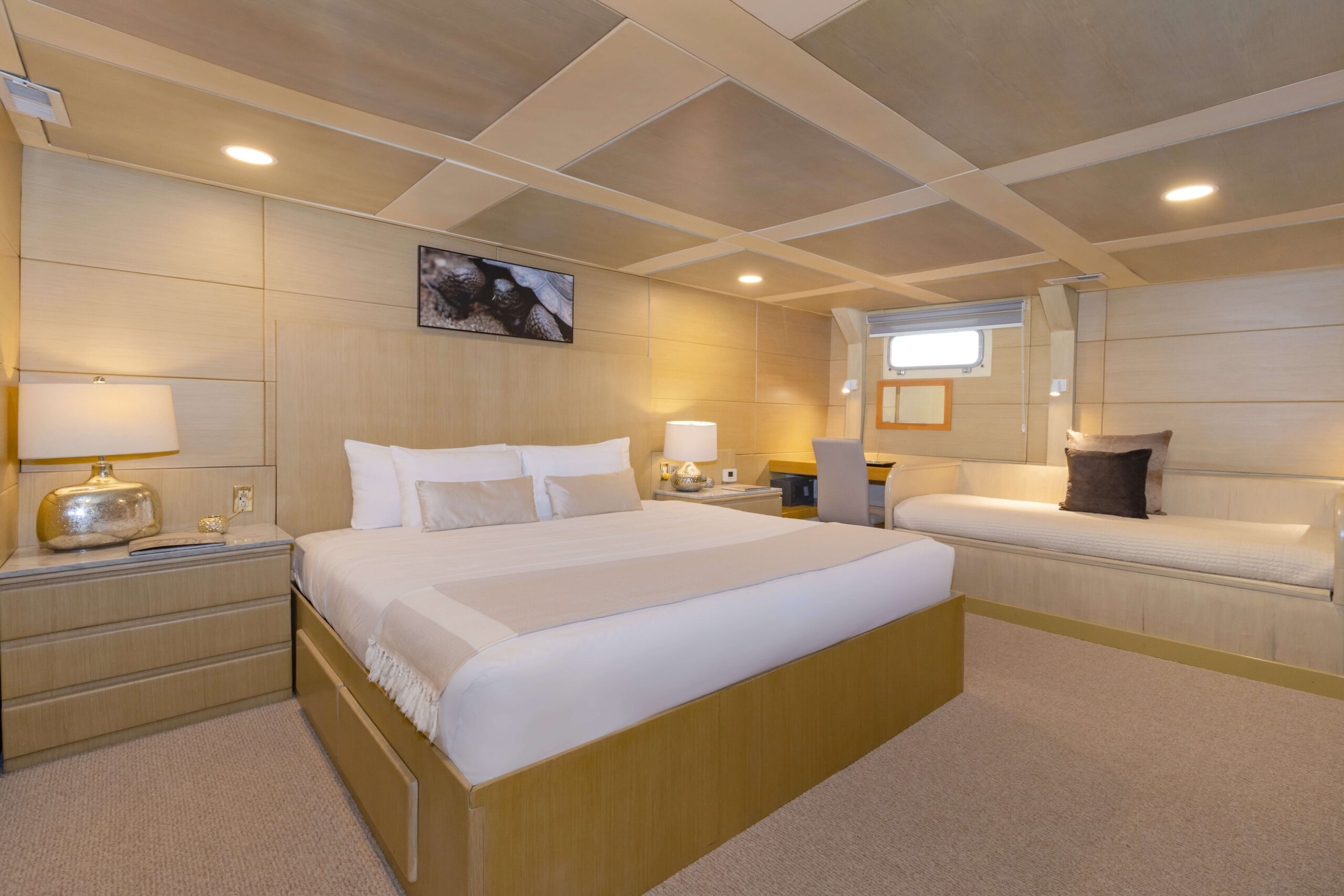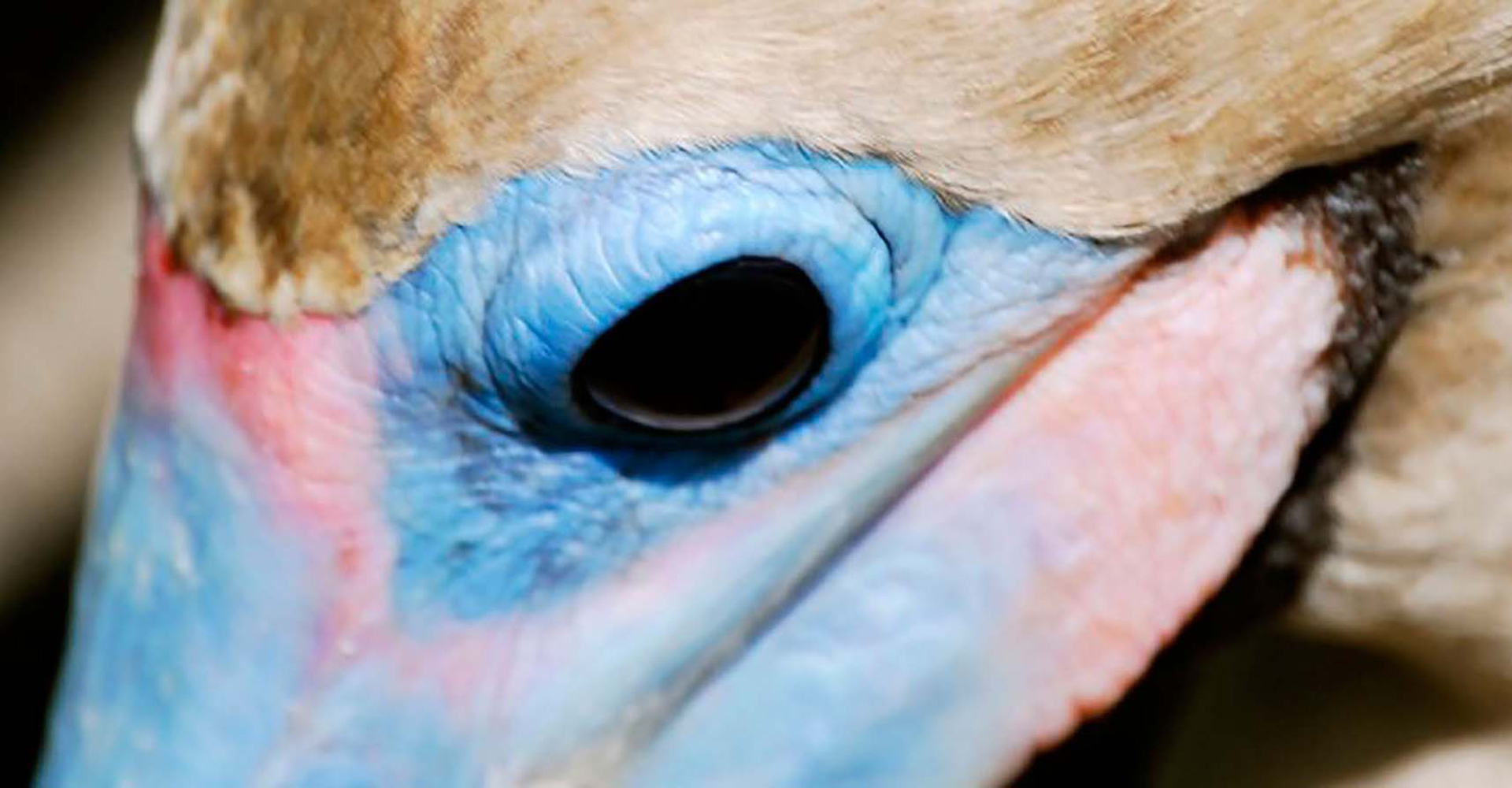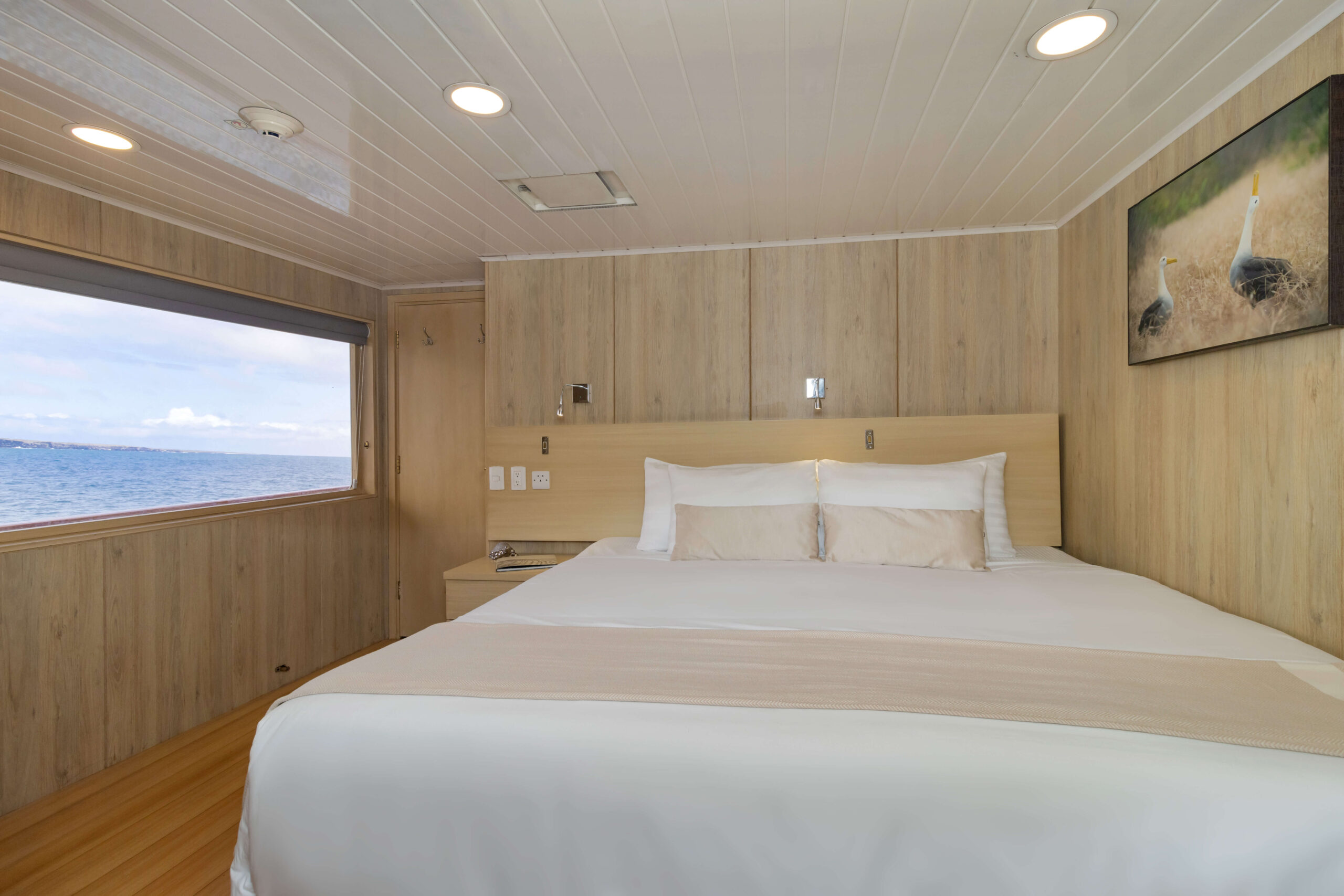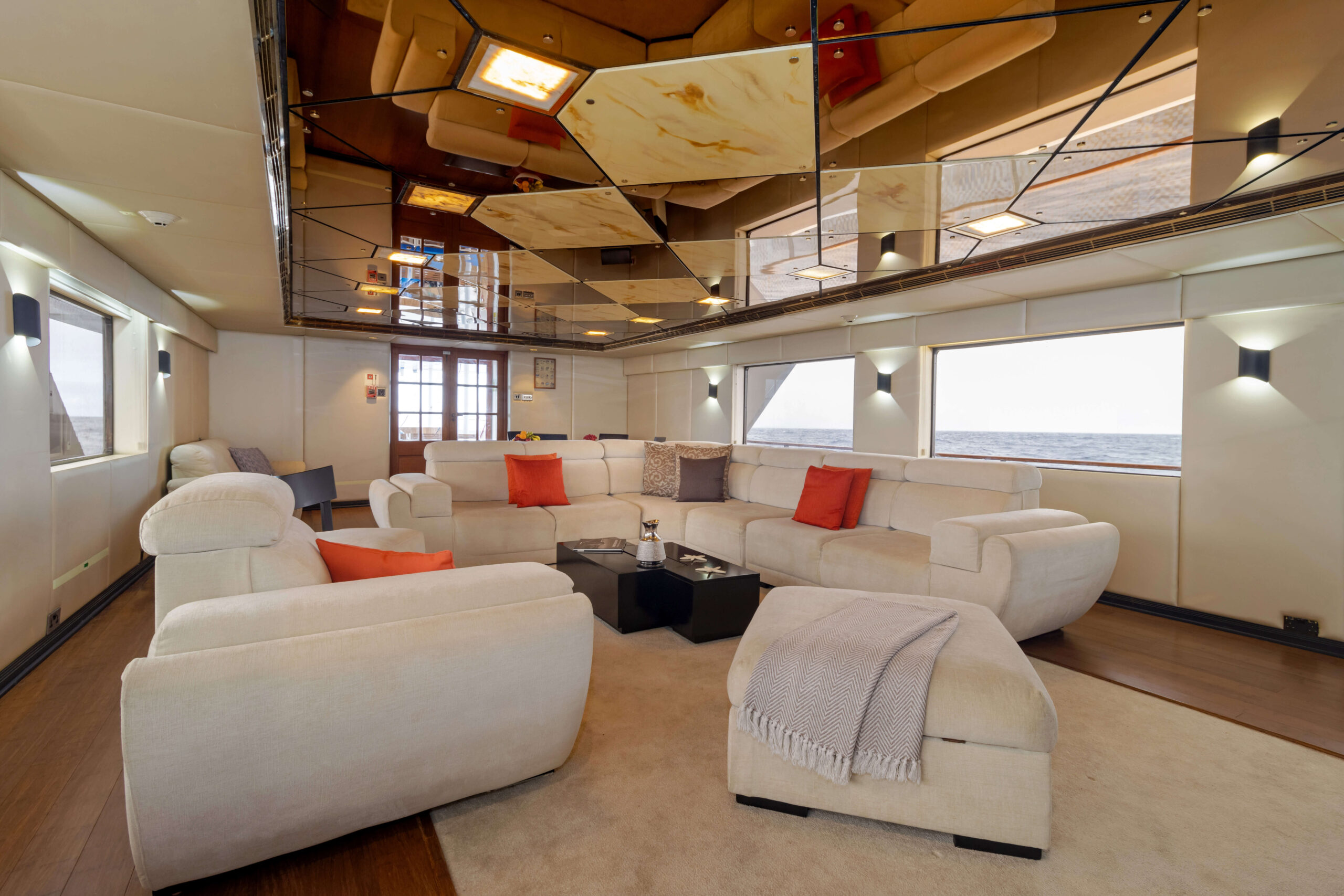Passion: “East” Itinerary
This Passion Galapagos trip itinerary focuses on the Central, Southern and Northern Islands, including visits to Tower and Hood Island, two highlights of the Galapagos Islands.
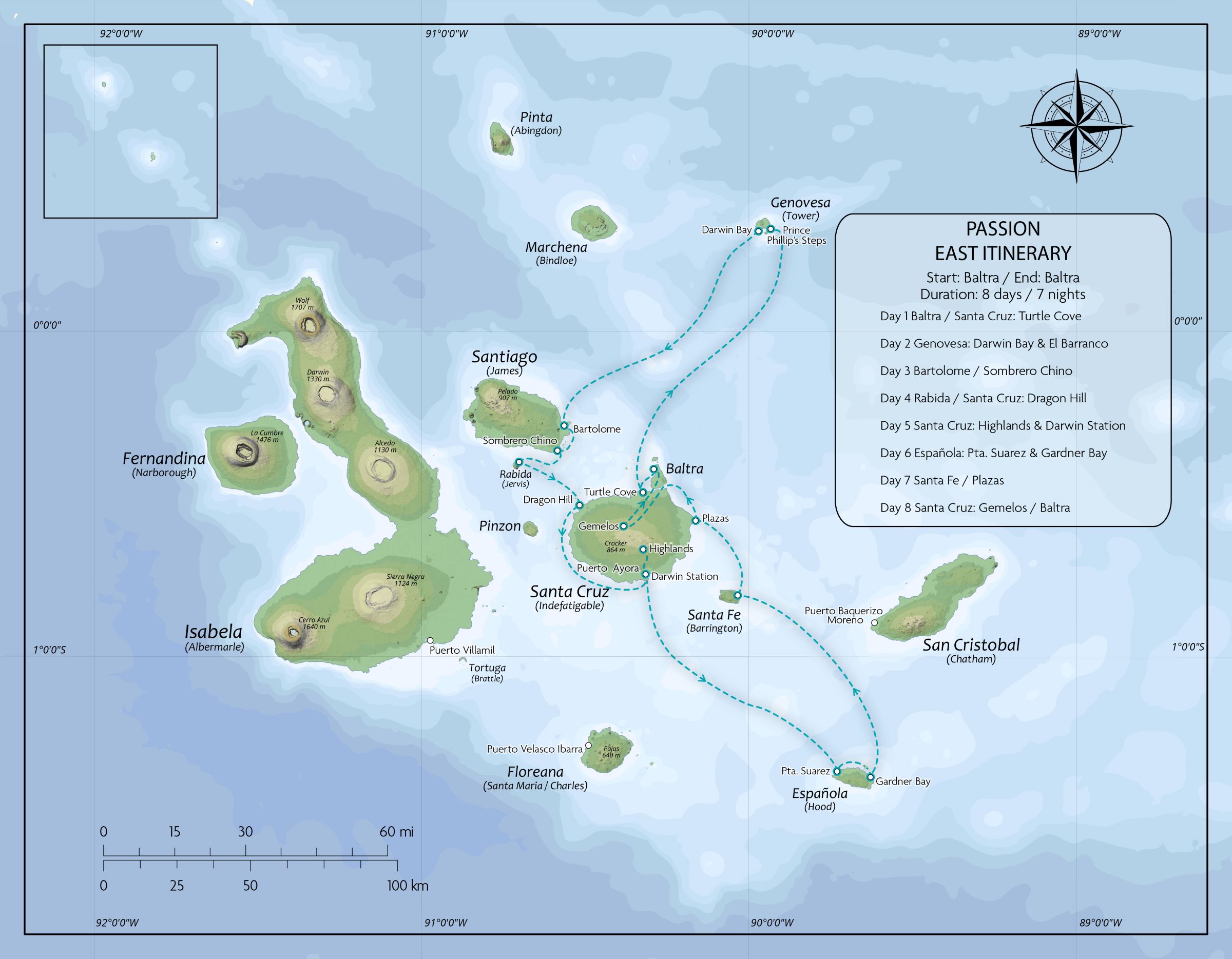
Day 1 (Saturday): Arrive at Baltra Airport / Santa Cruz (Indefatigable) Island
Santa Cruz Island: The largest of the central islands, Santa Cruz is home to many tourist visitor sights and the largest human settlement, Puerto Ayora.
- Caleta Tortuga (Turtle Cove): Turtle Cove is a red mangrove lagoon on Santa Cruz and a perfect example of how mangroves alter the marine environment to create a rich and unique habitat. You will have the opportunity to see sea turtles, rays, sharks, and sea birds.
Day 2 (Sunday): Tower (Genovesa) Island
Tower Island (Genovesa): Tower is an eroded flat volcanic island, with a natural harbor, which is actually the submerged caldera of this volcanic island.
- Darwin Bay: The steep cliffs of this area dominate the island. This area is home to thousands of frigate birds, red-footed boobies, Noddy terns, lava gulls, tropicbirds, doves, storm petrels and Darwin’s finches.
- El Barranco: There is a good possibility of seeing the unique “Short eared owl” at this site. During the dinghy rides along the cliffs fur seals and several species of seabirds can be spotted.
Day 3 (Monday): Bartolome (Bartholomew) Island / Sombrero Chino (Chinese Hat)
Sombrero Chino: Sombrero Chino is a small volcanic island just off the southeast tip of Santiago. The name of the island describes the shape of the island. Fauna includes Sea lions, marine iguanas and the Galapagos penguin.
Bartolome Island: A hike will take you to the highest point on Bartolome for a spectacular view. Sea lions and penguins can be seen around Pinnacle Rock. There is a sandy beach with great swimming and snorkeling.
Day 4 (Thursday): Rábida Island / Santa Cruz Island
Rábida Island: Rábida is a small island with a dark red coral sand beach. Highlights include the lagoon with flamingoes, pelican nesting site, sea lion bachelor colony, and a snorkeling site at the end of the beach.
Santa Cruz Island:
- Dragon Hill: Dragon Hill is located in the northwestern side of Santa Cruz Island. Some highlights include small lagoons with flamingos, Palo Santo trees, and Opuntia cactus. As well Land Iguanas.
Day 5 (Wednesday): Santa Cruz Island
Santa Cruz Island
- Highlands of Santa Cruz: Galapagos giant tortoises can be seen in the wild in the highlands of Santa Cruz
- Charles Darwin Station: Visit the Charles Darwin Station is a research facility and National Park Information center. The Charles Darwin Station has a giant tortoise and land iguana breeding program and interpretation center.
Day 6 (Thursday): Española (Hood) Island
Hood Island (Española): Hood is the oldest of the Southern Islands and is the southernmost in the archipelago. Because of its remote location a unique range of endemic species evolved here
- Punta Suarez: The wildlife at Punta Suarez is plentiful and varied. Along the cliff visitors can enjoy the blowhole where seawater is forced about 20m into the air. The highlights are the Waved albatross (April-Dec) that are only found on Hood, Galapagos Hawks, blue-footed boobies, Nazca boobies, and Española lava lizards.
- Gardner Bay: Located on the northeast of the island, the site has a long and beautiful white sand beach inhabited by sea lion colonies.
- Islote Gardner and Islote Osborn: These islets are snorkeling sites where visitors will see an abundance of tropical fish, reef sharks, and turtles.
Day 7 (Friday): Santa Fe Island / South Plazas Island
Santa Fe Island: Santa Fe is a smaller island of 24 km2. The visitor site Santa Fe is located on the northeast end of the island. Highlights include Santa Fe land iguanas, pelican nesting site, sea lion colony, mockingbird, and Palo Santo trees.
South Plaza Island: Plazas consists of two very small islands that were uplifted from the sea, separated by a channel. Only South Plazas has a visitor site. The highlights include tall Opuntia cactus, land and marine iguanas, rocky cliff that looks out towards open ocean which is also a nesting site for red-billed tropic birds and gulls, and a seal lion bachelor colony.
Day 8 (Saturday): Santa Cruz Island / Baltra for return flight to Quito
Santa Cruz Island
- Los Gemelos: Surrounded by the endemic Scalecia trees, these two sunken craters are known as the twins. They are naturally beautiful and home to yellow warblers and finches.
Baltra Island
- Return flight to Quito
To discover the central and western parts of the Galapagos Islands, check out our Passion West trip itinerary.
- Duration: 8 days / 7 nights
- Start / End: Baltra / Baltra
- Activities: Walking, hiking, snorkeling, swimming, wildlife watching, bird watching
- Highlights: Land iguanas, marine iguanas, fur seals, lava lizard, Galapagos snake, magnificent frigate bird, blue-footed boobies, red-footed boobies, short-eared owls, lava herons, cactus finch, sea lions, giant tortoise reserve, Nazca boobies, swallow-tailed gulls, sea lions, Galapagos hawk, hood mockingbirds, flamingos, Galapagos penguins
- Season: All year
- Included: All meals and accommodation in double cabins while on board, welcome cocktail, all excursions and activities while on board, wetsuits, snorkeling gear, use of kayaks, bilingual naturalist guide
- Not Included: Flights to and from Galapagos, Galapagos National Park entrance fee, Migratory card fee, any extra beverages on board (anything in a bottle), tips, personal expenses
- 2025 Prices starting at: US $8000 per person
-
Included
BirdwatchingNatureSoft adventure
-
Not Included
CultureFlightsGalapagos Migratory FeePark FeeTips & GratuitiesYoga



